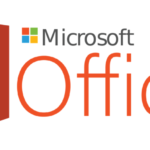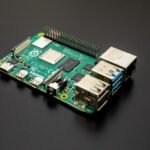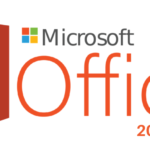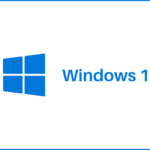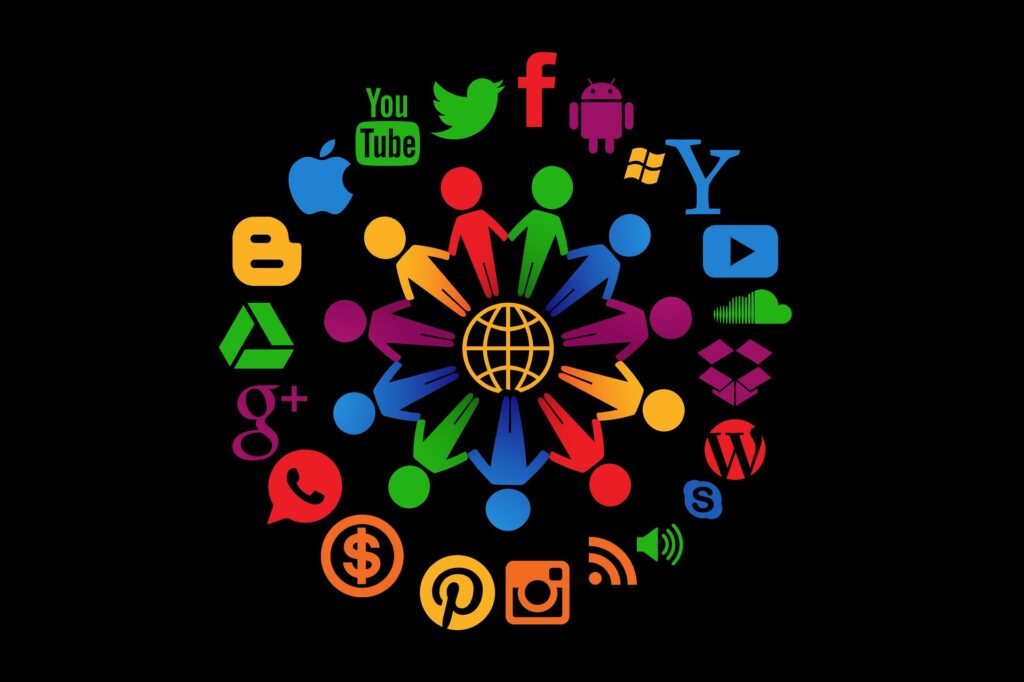Internet technology and network protocols.
Internet data transfer technology.
Packet switching technology – packet switching techniques are commonly used in computer networking to transmit computer data packets from source to destination in connected computers. Where it divides the large message of data into smaller data packets. And when the network connection is established, it starts sending data continuously from source to destination in a bunch of data packets. Here first any data packet can be delivered from the first source to the location. Where it depends, which data packets are routed in the network faster. Where in the network a small packet of data is moved between the source to the destination host. Where each data packet contains the network address of the sending source location. Here the connected network hardware switches and router devices decide which data packets to go where, and where to stop. Where x.25 tcp/ip and frame relay are common data packet switching-based techniques.

Internet protocols – internet protocol has some unique rules and internet network standards. Which are followed by the client and the server during network communication. Here internet protocol defines the term of secure network communication with network reliability, accuracy, and flexibility. Where internet protocol addresses or defines network schemes during internet network communication. Where each client is assigned a separate server-to-ip internet protocol for individual communication over a wide area network or local area network. Where internet protocol replaces larger network communications in smaller subcategory network communications. Typically, the client system network ip address that is manually added to any client machine is 111.112.113.1. Even this ip address provides individual mechanisms of communication. Where the internet protocol cooperates with tcp (transmission control protocol), remember here, that only the internet protocol makes the global communication network possible.

Popular internet protocol.
Tcp/ip – tcp (transmission control protocol for short) is an internet network protocol. Which system works with client ip. Where internet protocol defines the network source for the destination. But the transmission control protocol establishes the connection between the client and the server, and initiates data stream transmission between connected internet network components. Even with tcp/ip protocol tcp/ip is a reliable protocol for successfully designing data packets/streams from source to host location without error bug-free communication.
Tcp protocol – tcp is abbreviated as transmission control protocol. Where tcp protocol is used to transmit data packets between client and server. Where a proper connection is established between the client and the server (host) before data transmission in the tcp protocol. Where tcp protocol is specifically responsible for successfully delivering data packets from source to destination. Even tcp protocol is usually used with common ip (internet protocol) tcp control data packet stream data from source to destination.
Ip protocol – ip stands for internet protocol. Where ip is the set of protocol addressing systems in the local network or global internet network. Where each network system has a unique ip address. It is not the same in a normal established network. Where the ip is usually the same as the home office addressing system. Where the post reached between the sender and the receiver’s location or not, it is related to the ip protocol. Computers carry the data, and the world data and packets smoothly between client and server locations with a unique ip address system, and network data travel through this protocol, just like in internet networks.
Ssh protocol – the ssh protocol is used to protect network system security when accessing certain network information or exchanging network resources. Where it intentionally uses the ssh protocol in the network. So that a remote computer with privileges for network administrative tasks can be used to control and modify the role or behavior of the client.
Ftp protocol – in the term of internet network, ftp means file transfer protocol. ftp is a protocol used to share and exchange some useful information and databases between client and server computers, especially with the tcp/ip protocol, and these use two different network data transmission systems. Is. Where the ftp protocol is widely used in some information upload or download modes. The ftp server uses a client-server environment, architecture, to transfer some useful data and information.
Smtp protocol – smtp is a simple e-mail transfer protocol. Which are used to send user-generated e-mails between the source location and the destination path. Where the smtp protocol is largely responsible or liable for sending a list of e-mails from the user’s mail account. Here the smtp protocol sends data and information equally as pop and pop3 e-mail protocols. and imap protocol e-mail achieves the same protocol functions as e-mail with smtp protocol. Where smtp is the common used e-mail protocol. It is an e-mail client application that works with linux, unix, windows, and mac based operating systems.
Http protocol – http is the protocol recognized as hypertext transfer protocol. Which web browsers use to access and navigate information placed on web pages in the form of static or dynamic web page content. When internet users access the world wide web resources to search the www database. So, the http first protocol automatically links to and connects to open web portals. In simple words, when the user made a request to search web portals and web address servers, the client machine requested a web page with http old and new https protocol connectivity and displayed in the active web browser.
Ssl protocol – ssl is known as secure sockets layer protocol. Where this protocol works with internet authentication security check protocol cryptography systems. which share and exchange certain external network data packets and information using the network in a client-server environment. Where it uses a pair of secure keys to access information secured with a cryptography system. Where it provides for the use of public and private keys between the sender and the receiver when opening and dealing with content secured with the ssl protocol.
Pop protocol – pop post office protocol is a popular e-mail protocol used for receiving e-mail in client-server systems. Here you can have an e-mail client or an online e-mail client program receiving all your inbox e-mails via the pop protocol. Where you can use two protocols simultaneously to access or receive an e-mail, pop, pop3, and imap protocols. Especially use of this protocol for portable laptops. When the user’s inbox points to a new mail notification. Then it gets automatically from the server to the user inbox via pop protocol.
Ppp protocol – ppp protocol is recognized as a point-to-point protocol. Which is used to connect more than one computer network system to the network. Point-to-point client-server systems that use a phone line, cable, or internet to connect and share information. Where ppp protocol is mostly used for sending and receiving network data packets between commercially connected network clients.
Imap protocol – imap protocol is abbreviated as internet message access protocol. Which is used to access and receive e-mail messages in client and server environments. Where portable smart devices use the imap protocol to name laptops and other portable gadget devices. where the imap protocol behaves the same as the pop protocol. It also receives a message from the server-side computer.
Tls protocol – tls is abbreviated as transport layer security protocol. Which is used to protect data security and privacy between the client and server environments. Where it uses a telephone line and network connection to share data information with complete data packet integrity, security. Including network security.
Udp protocol – udp is abbreviated as user datagram protocol alternate communication protocol for sharing with tcp. Where other computers work with other networks using the udp protocol. Where it sends the information of small data packets with the udp protocol in the network.
Dns protocol – dns abbreviated as domain name system, is used to convert domain names and server addresses into internet protocol equivalent addresses. Where every web address on the internet is shown in text format. The dns system is a technique for converting text in web portals to decimal ip address format.
Dhcp protocol – dhcp is abbreviated as dynamic host configuration protocol. Where the dhcp protocol network ip address system assigns ip addresses to computers. In networks, where each client and computer automatically receives an ip address provided by the dhcp protocol or machine after being connected to the network. Even the dhcp server allows each client to connect and obtain a network address for proper communication between the client and the server.
Icmp protocol – icmp stands for internet control message protocol. Which are specifically used by network system builders to investigate network error reporting. Where data packets travel across the network from the source to the destination address between the client and the server. Where you can see here information about any data loss, wrong network data packet, information-related issues.
Ipv6 protocol – ipv6 stands for internet protocol version 6. Where it is an advanced version of the new generation internet protocol from the old ipv4 protocol version. Where there is an advantage of using the ipv6 protocol to connect one or more network devices and computers on a large scale to share high amounts of network data.
Rip protocol – rip stands for routing information protocol. Where it is a popular network router protocol used to find the shortest path to find network information between client and server computer network connections. When a search request is made in the network system by the user. Then the rip protocol communicates with the server, and the router traces the easier and shorter path from the device to the server than for the client.
Ospf protocol – ospf protocol means, open is the shortest path. Where it is first used to find the shortest network path routes in a connected network. Where it uses search algorithms to filter out the appropriate shortest path to quickly find and access the information. Where there is an advantage of using ospf network to connect the best open short first path between linked network devices.
Egp protocol – egp is abbreviated as external gateway protocol. Which is used to share information between two connected networks in the same area host computer. Where it is used in large organizations, industries, government organizations. Where the major advantage of using the egp protocol is to obtain information about the connected hosts. To control and watch the activities of hosts in the same area. In addition, these protocols provide and share the latest updates and information.
Bgp protocol – bgp is abbreviated as a border gateway protocol. Which is used to pass network information between connected routing device networks. Where these protocols play an important role in the network for the internet service providers to the users.
Arp protocol – internet protocol is arp abbreviated as address resolution protocol used to convert ip addresses. Where the network connects to the internet protocol, and the address is defined and modified through the arp protocol.
Rarp protocol – rarp is short for reverse address resolution protocol. Which enables a network client computer to make ip requests made by a server or network computer. You even use this protocol to convert the current ethernet address into a physical address.
Imap4 protocol – the imap protocol is abbreviated as internet message access protocol. Where the imap4 protocol has a role in the group of e-mail protocols. Where it retrieves user inbox e-mail address information from the server location. Even the imap4 protocol is more advanced and offers the full e-mail protocol for e-mail account users in the network.
Snmp protocol – snmp is abbreviated as a simple network management protocol. A protocol is used to manage network services. Where network information, devices, share control and implement network privileges between connected network devices.
Telnet protocol – the telnet protocol is used to connect computers to telnet services. Where you can connect and share telnet protocol services, connect to telnet, and access its services or benefits.
Slip protocol – slip stands for serial line internet protocol. Where a slip protocol connection was used in a computer dial-up connection to connect to an internet network. Where slip protocol was used before 2000. Where these protocols all traditional internet users used this protocol to connect to internet services with dial-up network connections.
Atm protocol – atm is abbreviated as asynchronous transfer protocol. Where atm technology is capable of sending data in 53 bytes cell format to the connected digital network system. Where we use this protocol to send data and voice with the connected network.
Dhcp protocol – dhcp protocol stands for dynamic host configuration protocol. Which is used by router devices in the network to provide ip addresses to all connected network devices or client machines. When a new client group is added to the network or internet dhcp protocol. Which gives it the ip to communicate in the network to share data and information.
Ldap protocol – ldap protocol stands for lightweight directory access protocol. There is even an e-mail program for internet use. and to locate or access information by searching the network location directory. Where we use this protocol on the internet to view and access any kind of program application. in which the network path contains the directory.
Xmpp protocol – xmpp protocol is abbreviated as extensible messaging and presence protocol. Where xml (extensible markup language) facilitates easy use of the xmpp protocol for sharing and communicating in the same network component location connected.
Udp protocol – udp is abbreviated as user datagram protocol. Where udp is used as an additional network communication protocol in connected networks to detect network error and other service issues.
Sip protocol – sip protocol is abbreviated as session initiation protocol. Where mostly this protocol is used in multimedia network communication mode. Even this protocol has handled multimedia network session behavior. Where many services are controlled and managed by online sip protocol. When users use instant messaging for video conferences, voice calls, chat program communication, etc.
Routing protocol – a routing protocol designed to find the fastest path between a connected network and the services provided. Where the important role of the router is to pass the network the request path is made easier and faster. This includes controlling behavior of connected network client sessions.
Internet addressing scheme – internet addressing scheme controlled by a global network system. When we communicate in the world of global internet networks. Where multiple network clients communicate at the same time to any or different workstations or terminals around the world. Hence, where they all follow different internet protocols and a unique ip address system. which can be isolated, and provides secure network communication between connected network terminals. Here the ip address is like the name of the computer machine used in the network. We only compare this to the human name, household name, or label of any product. that cannot be assigned to one or more domains or groups. Here we can take the example of a small local area network. In which the number of client workstations assigned is the unique internet protocol address assigned by each client. Now you can decide which client has how many rights in the network. What type of service does he use? The business role of internet addressing planning is to provide secure isolated and reliable communication in the design of a local area network or a global area network. Where the internet addressing scheme avoids network communication collisions and other issues during networking.
E-mail addresses – e-mail addresses can be addressed similarly to your bank account number and other unique fixed numbers. When you open a bank account, and when you need to withdraw some amount from the account. So here you need an account number for any digital processing. Similarly, an online e-mail address on the internet is an e-mail account that can be configured to use the internet to create, send, receive, e-mail text messages around the world by configuring the e-mail account. Is. Where e-mail is a worldwide mass mailing online facility. Which allows you to compose and distribute messages around the world. where the e-mail address is your online communication account. Which enables you to exchange e-mails globally between connected email clients. Where you see different servers provide a mechanism for e-mail format. Remember, no two e-mails here can ever be of the same type. Here each user has a unique e-mail address and password. Even the email account service provider company always provides the unique name e-mail. If you try an existing type of email account. So here the e-mail provider company rejects and saves you from getting an existing email account.


















